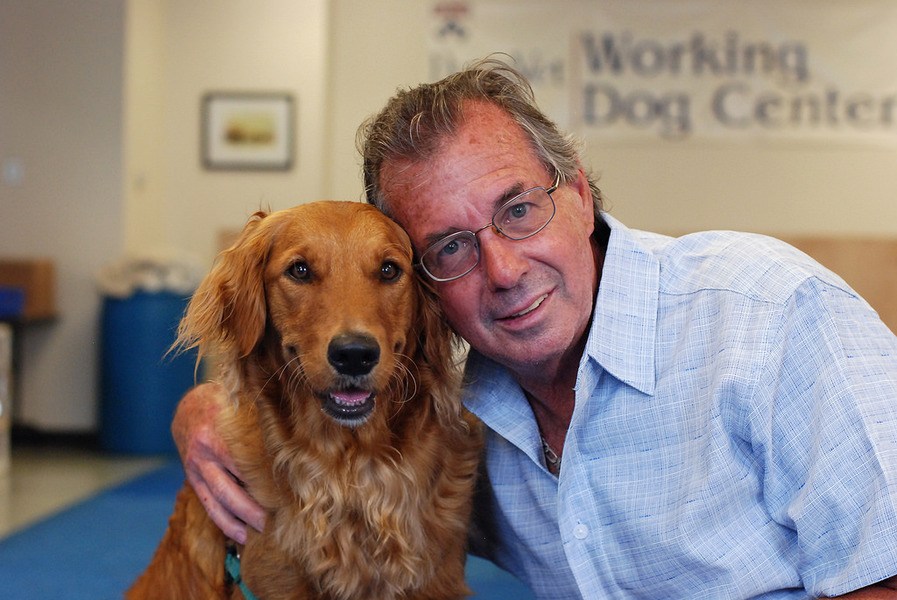Wayne Mowry and his diabetic detection dog (and best friend) Bretagne.
Like AKC on Facebook and follow us on Twitter today for all the latest dog news!
Written by Dr. Cindy Otto, DVM, PhD
Requirements of a detection dog: fervent, keen, driven. Certain canine breeds have these natural instincts. And if there’s one thing experts will tell you about training detection dogs, it’s that these traits cannot be compromised.
At the Penn Vet Working Dog Center (WDC), we are dedicated to harnessing the unique strengths of our canine partners and producing an elite group of scent-detection dogs for public safety and health. Our dogs are trained to prevent crime and acts of terrorism, working alongside military, police, TSA, and the Department of Defense to find explosives and narcotics; rescue victims of accidents or disasters, using expert search and recovery skills; detect ovarian cancer; and alert people with diabetes when their blood sugar is out of normal range.
We recently graduated our first diabetes detection dog, a purebred golden retriever named Bretagne. This super sniffer can alert her owner, Wayne Mowry of Bloomingdale, NJ, when his blood sugar levels are too high or low.
So does Bretagne’s breed matter? It’s a common question, and the answer is honestly, “Yes.”
Dogs are capable of intelligent work that can save lives; Bretagne is just one example. Experts often work with purebred dogs to ensure these canine graduates are dependable and can deliver on their training. It would be impossible to create a training program with dogs who are unpredictable in their abilities, temperament, or natural breed-specific capabilities without compromising people’s lives.
Time and again, the Penn Vet WDC relies on purebred, American Kennel Club-registered puppies because, with time and training, their instincts provide stability in situations where, potentially, everything around them is crumbling. I witnessed one of those scenarios firsthand when I studied the health and behavior of our canine heroes at Ground Zero in the wake of the 9/11 attacks. These dogs aided in searching the debris for victims, and that meant the difference between saving a life or recovering a loved one, and never knowing how they passed.
I’ve also heard countless testimonials like the one Wayne recently shared with me. He said, “It’s hard to express what it feels like to no longer be in a constant state of worry. Bretagne is my new constant companion, and she is unfailingly by my side, making sure I get the care I need. That means a lot to me.”
In canine detection work, breed matters. Proven breeds can perform time after time, and that is vital when you are relying on the professional dog to find deadly explosives, lethal illegal drugs, trapped victims, or life-threatening health conditions.
If you want peace of mind through dependability and consistency, then science and practical experience show purebreds are ideal for canine detection services.
– Dr. Cindy Otto
Dr. Cindy Otto, DVM, PhD, is the Founder and Executive Director of the Penn Vet Working Dog Center (WDC). She first began monitoring the health and behavior of Urban Search and Rescue canines when she was deployed with Pennsylvania Task Force One to Ground Zero following the 9/11 attacks. Upon returning from Ground Zero, Dr. Otto, with a grant provided by the AKC Canine Health Foundation, initiated the only longitudinal study to follow the effects of the deployment to the World Trade Center, Pentagon, and Staten Island Landfill on the Search and Rescue dogs’ immediate and long-term health and behavior. The WDC opened on September 11, 2012. Dogs in the program are named in honor of individuals who lost their lives on 9/11 and canine heroes who served following the attacks.
Like AKC on Facebook and follow us on Twitter today for all the latest dog news!


